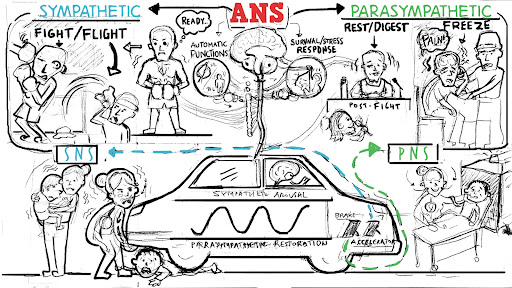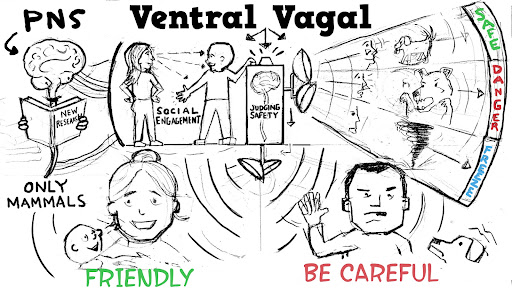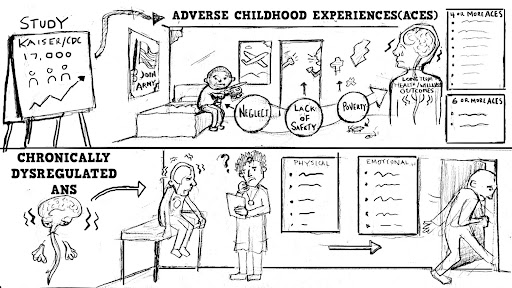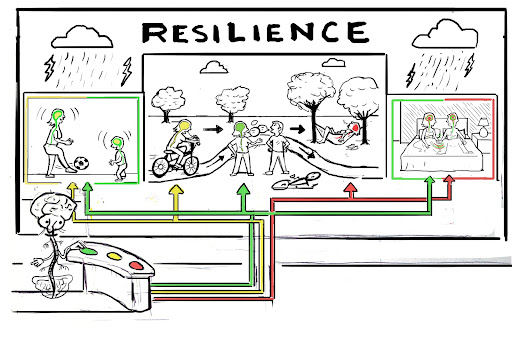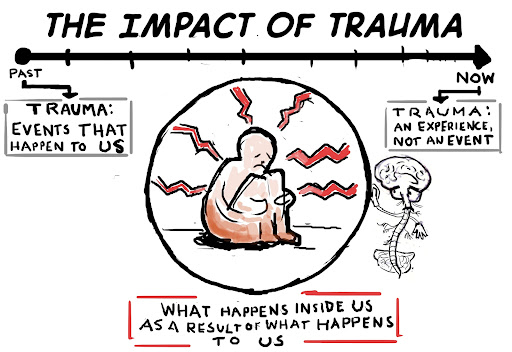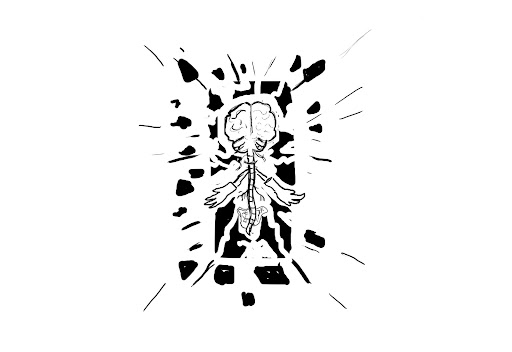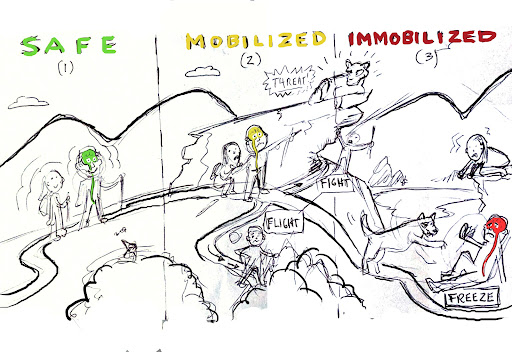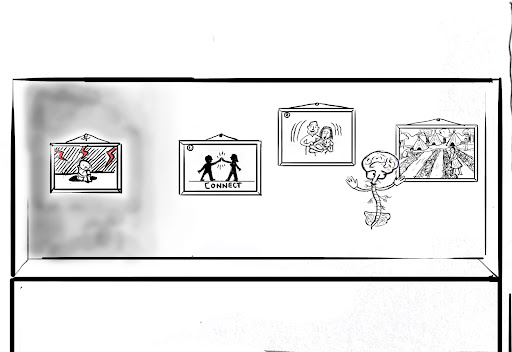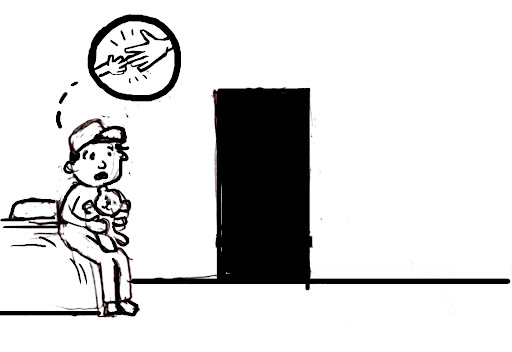Animated Video : Trauma and The nervous system - A Polyvagal Perspective
The above video, created for The Trauma Foundation and Polyvagal Institute in 2021, has garnered 750,000+ views in its various editions. The video is based on the the groundbreaking knowledge of Steven Porges’ Polyvagal theory. When people hear the word ‘trauma’ it is usually associated with more intense or extreme life experiences.
The purpose of the video is to connect with the everyday person and viewer and have them consider the trauma that they may be living with but may have previously been unaware of. It’s helped to spread awareness and educate about Trauma and its impact on the nervous system.
Video Process: The Making Of 'Trauma and The nervous system-a polyvagal perspective'
The video creation process began with a meeting of myself, Chris Rutgers of The Trauma Foundation, and Randall Redfield of The Polyvagal Institute. There were questions about the best way to begin the video creation process that are not always present when a script is either completely finalized or that is co-written together.
They came to the table with a great working script but were unsure of how to think about the video in a visual way. The project called for high levels of precision when it came to the message and what was portrayed visually so I suggested that we take an ‘on the fly’ iterative storyboard approach that would allow them to visualize the script as we went along.
The storyboard process we used allowed them to envision the storytelling flow and assess the script while making needed changes to both and allowed for sharper, precise feedback from Chris and Randall too.
We ended up doing 9 versions of a visual storyboard and 10 versions of a final script! If you look at the images above and to the left you’ll see varying storyboard samples from Versions 1, 4, and 7. While some of the themes and characters remained in the final storyboard (Version 9), all of the above samples were either not used at all or not used in the form displayed above.
This type of approach is not common for most projects but the communication stakes were pretty high with this project. This iterative process to clarify the script and appropriate visuals took around 2.5 months of work which included a weekly meeting . This was a highly-customized project and it was important to spend this time upfront on the precise message and storyboard because the video ended up being 9 minutes of animation, which took 3 months to animate and complete in and of itself!
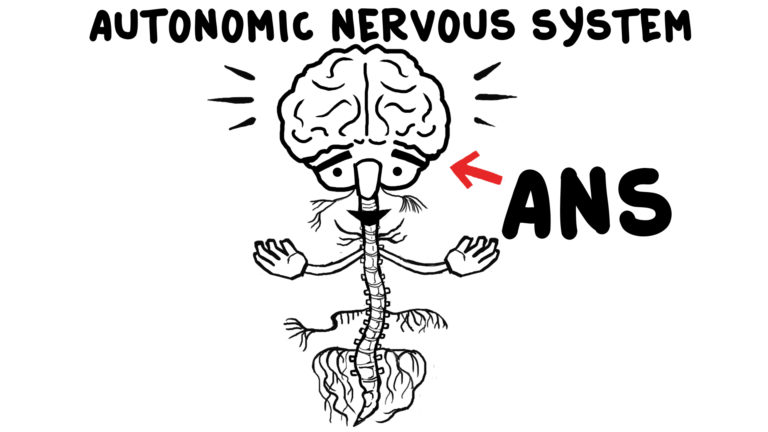
Beyond the overall contextual approach to creating the video, a big piece on the content side was bringing the the star of the video, a character named ANS (pronouned like ‘Anne’s) to life. ANS is short for Autonomic Nervous System-who is a brain, brain stem, spinal chord and a collection of nerves. Chris brought the initial inspiration and name for a character that would exist in the video. I appreciated his vision on this because I knew that it’s important to have a strong lead conceptual element (a great character(s)), especially for a longer, winding script.
The ANS character, as a conceptual visual and storytelling element, was present from the beginning of the storyboarding process and part of all 9 versions.
The thinking behind ANS was that we were looking for a way to represent complex nervous system functionality in an easily digestible and connectable character format. The only way to really do that from my perspective was to give him big cartoon-like eyes, hands that extended from ganglia, and let the underlying structure of the brain and spinal chord carry the rest of the human-shape impression for the viewer.
ANS is a bit odd looking, maybe even creepy, but he’s also as present and chipper as he can be! I knew that it was important to have a strong, slightly polarizing lead visual character in the story so that he could carry an important message for what ended up being 9 minutes of animation!
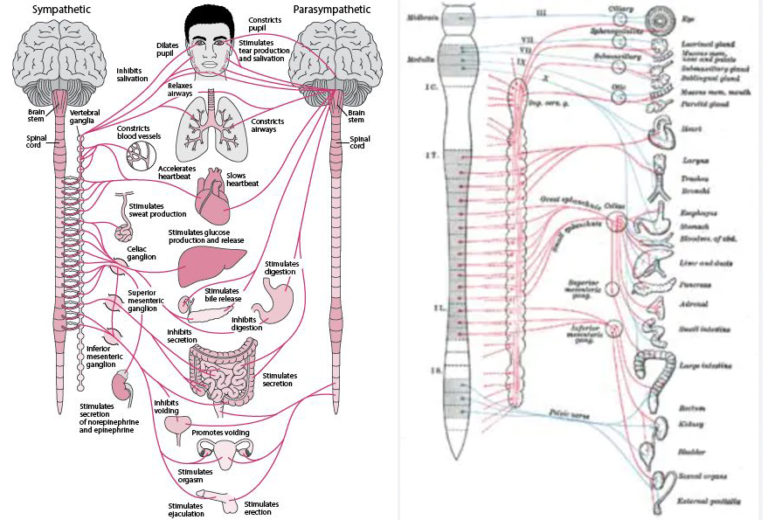
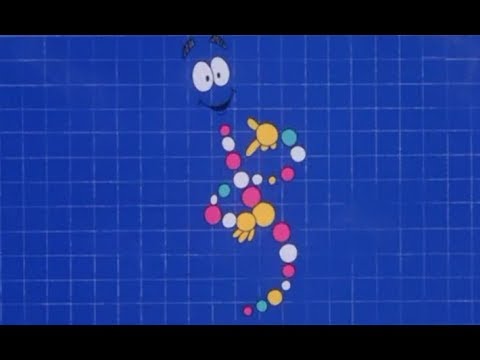
Chris initially had sent me imagery like the image on the left to help me see the complexity of what we were dealing with. I knew that the task would be to simplify the visuals as much as possible so that the character shined through enough to keep it’s ‘video guide’ influence.
One of the first things that popped into my mind was a memory from the movie Jurassic Park. I remembered this DNA character that was teaching about DNA and dinosaurs. The character explained something complex in a playful but easy to understand way. And that is what I wanted to do! As a kid, this DNA character had stuck with me from the movie with voice bouncing around in my head ‘Dino DNA!’, so I knew that ANS could work well if we kept it lightly playful without venturing into the ‘silly’ category. In order to humanize him more, I thought of him as capable of tending toward an element of play, while being flexible enough to display states of health where he looks like he is in well-being and states where he is wrestling with the impacts of trauma.
Luckily, Chris and Randall were both masterful and careful with how they spoke about and relayed concepts and this lent itself to the ‘easygoing’, empathetic nature of ANS throughout the video.
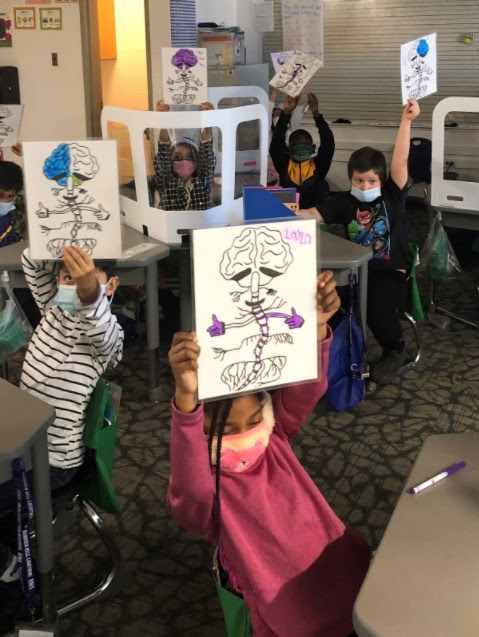
Lastly, another consideration was knowing that the video was going to be used as a tool of education. Education for everyday adults, possibly for clinicians in varying fields, and for people who are looking for understanding, insight, and hope when it comes to living with and healing from trauma.
To the left is a picture of kids in a classroom (Covid era) coloring on the ANS character from the video! This was published in the Polyvagal Institutes newsletter in 2021. If you read the blurb below, you’ll see how the vision of Chris and Randall’s video (with my visual art and storytelling assistance) has played out in it’s impact and uses!
“Have you ever wondered how amazing it would be if we could introduce PVT to elementary school-age kids? Well, Lori Desaultes, PhD and Kathryn Parthun are doing just that at Harrison Hill Elementary in Lawrence Township, Indianapolis. They are using the ANS – Autonomic Nervous System – character from the recently released animated video (created by PVI and the Trauma Foundation) to show students their nervous systems, explain its role in their daily lives, and talk about their sensations and states. Here they are coloring in their states. “When you become ANS’s friend, you focus on how you feel and understand everything around you!” Hats off to Lori and Kathryn from the PVI team!”
